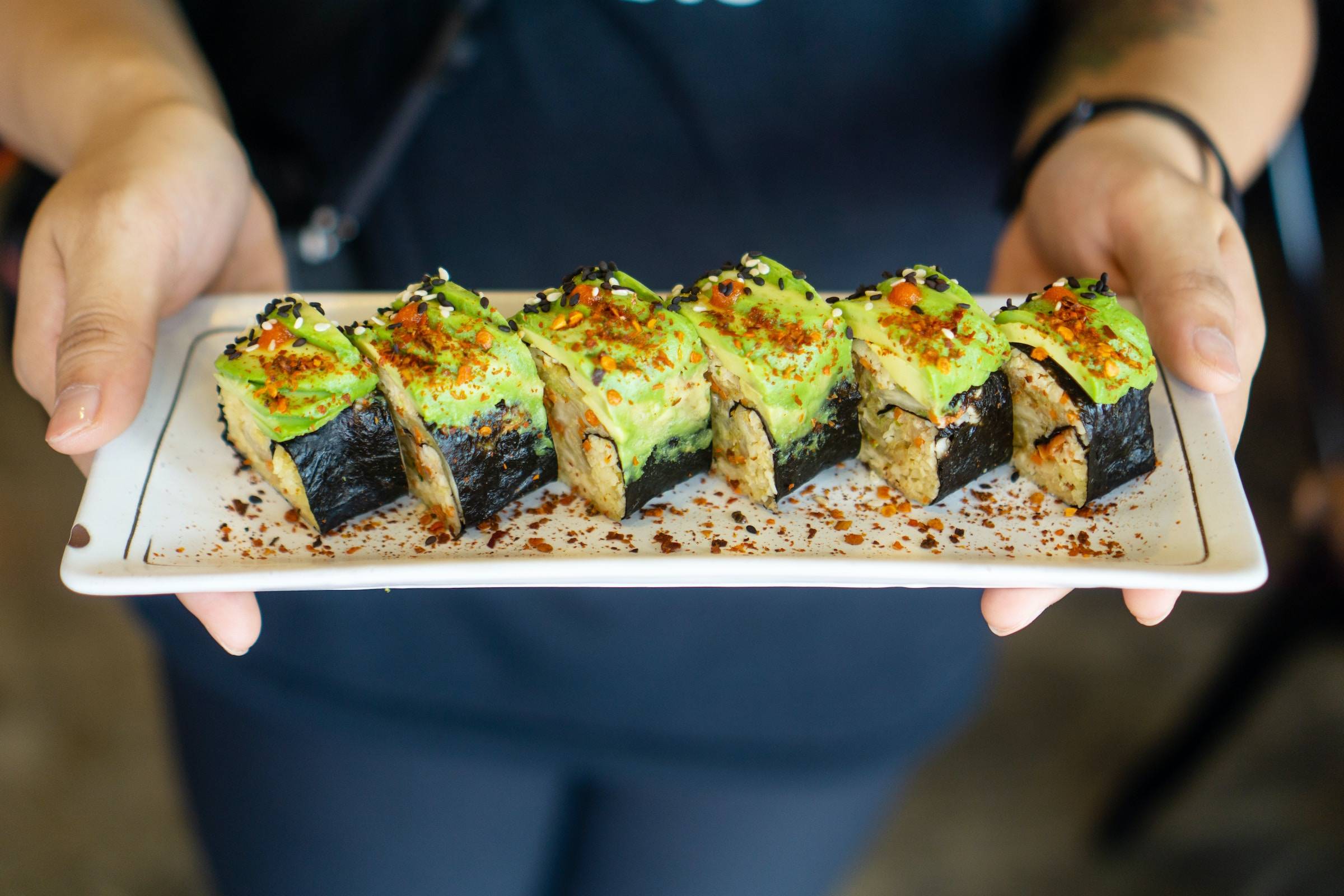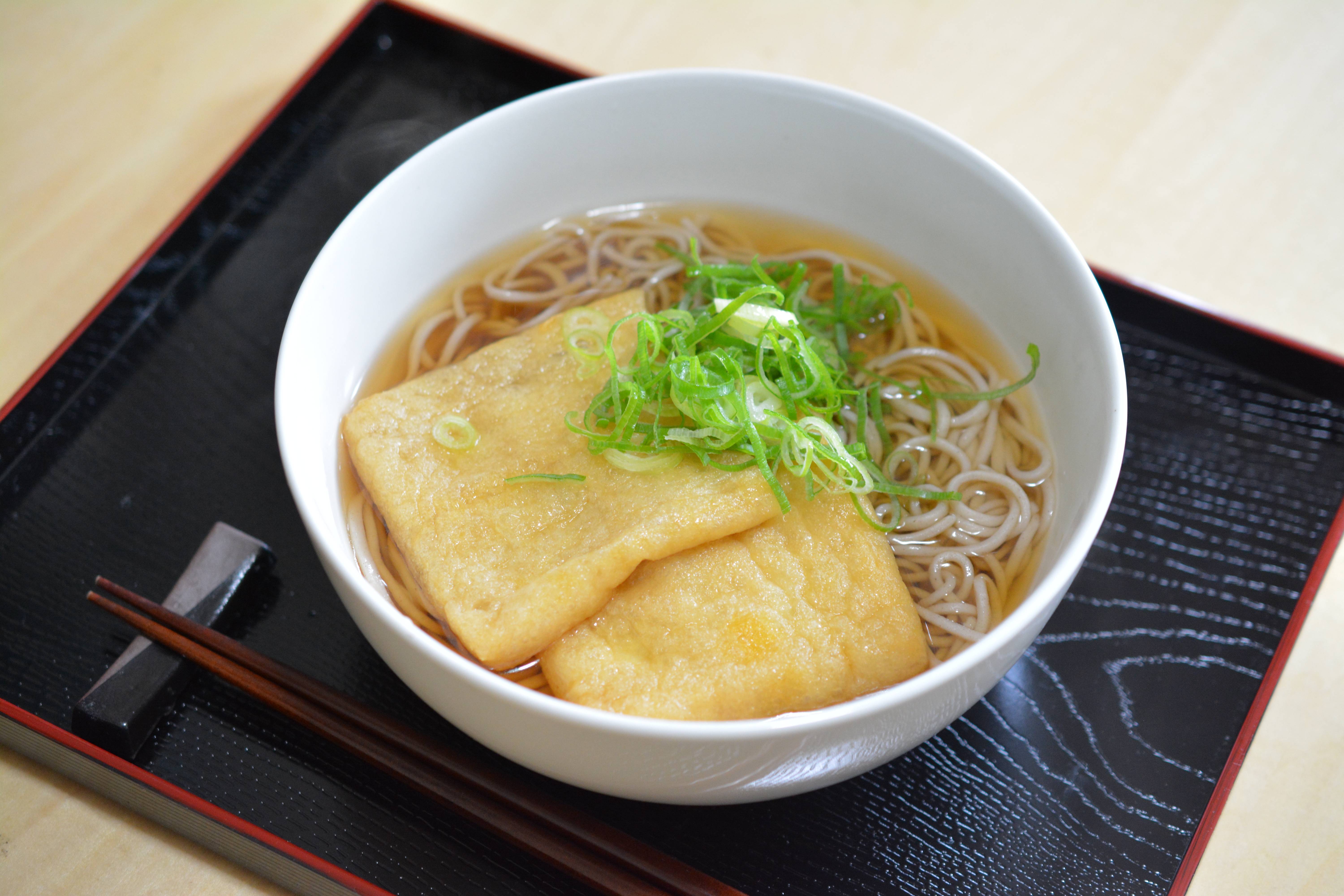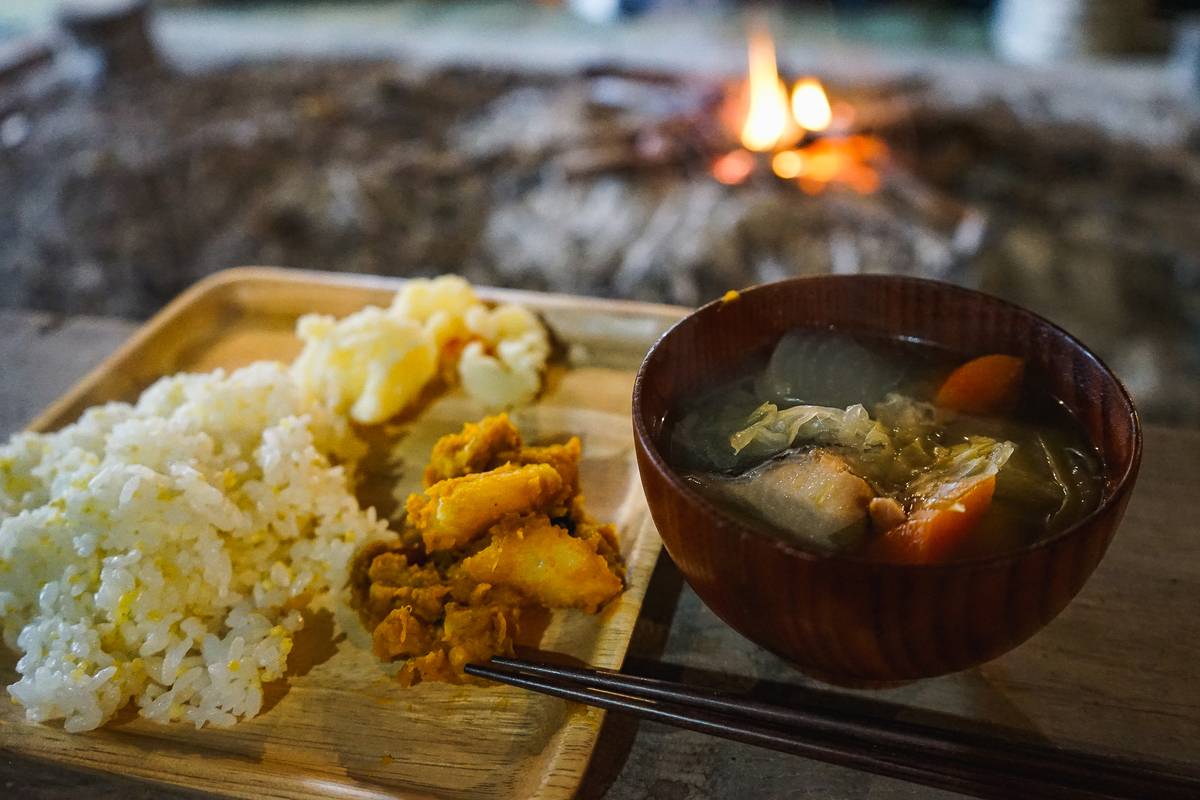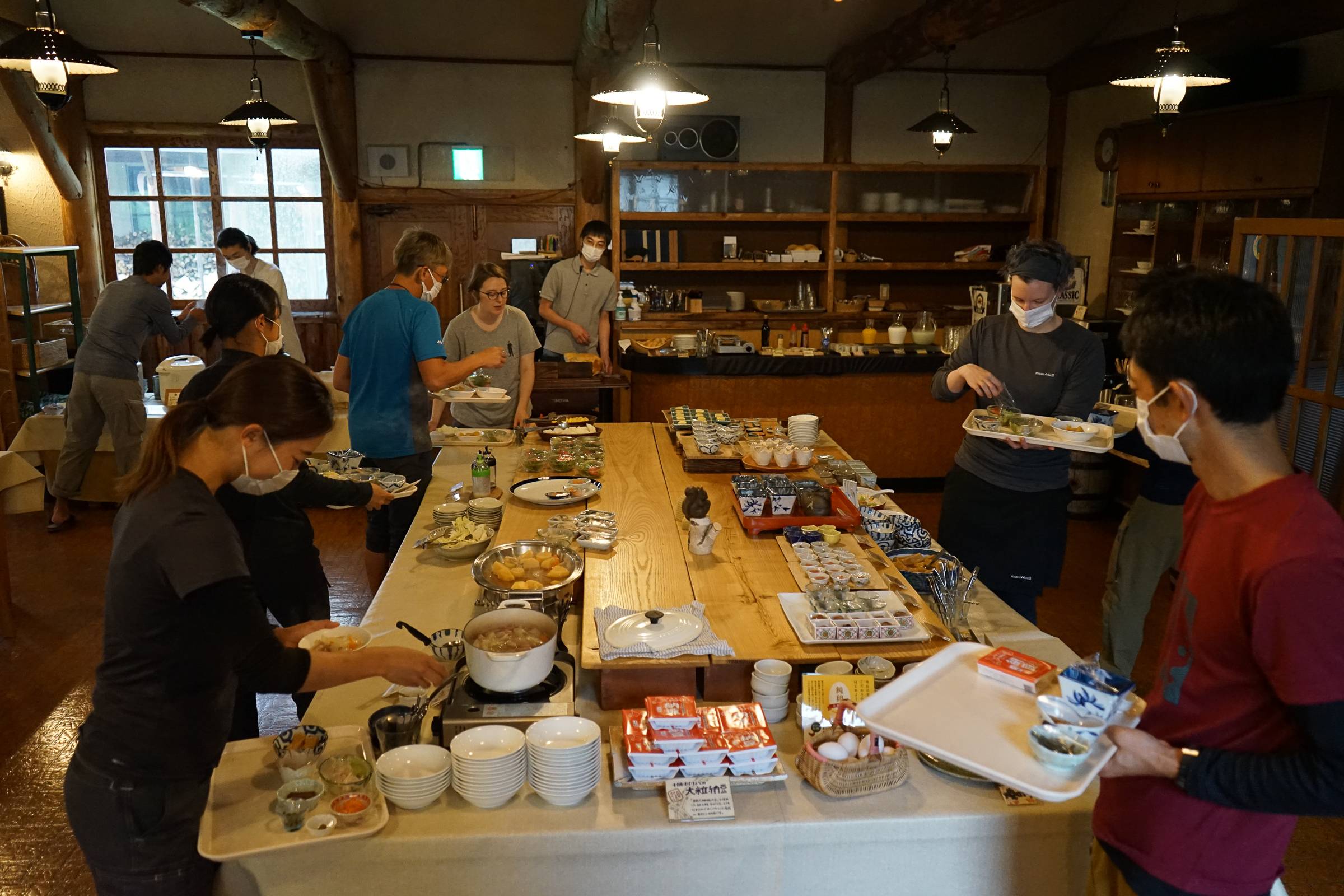With an increasingly planet-conscious population, the demand for vegan and vegetarian food is on the rise.
Vegan & Vegetarian in Hokkaido
Travel Tips
By Hattie

Planet-friendly diets have, after a long delay, finally reached popular cities like Tokyo and Kyoto and many visitors to these areas of Japan seldom struggle to find enough to eat, these days. Unfortunately however, it has been slow to catch on in rural areas, including most of Hokkaido.

This makes it among one of the most difficult places to be a vegan or vegetarian in Japan. With some compromises, namely allowing meat or fish traces into your diet or accepting that you won’t be able to fully experience Japanese food culture, it can be possible to eat well in Hokkaido. However, if either of these are not a compromise that you are willing to make, then it is perhaps best to consider whether or not Hokkaido is the best fit for you over other parts of Japan, where veganism and vegetarianism are more widely understood.
If you still feel that you would like to visit, then read on! We will do our best to explain why it can be so hard to be vegan and vegetarian in Hokkaido and to offer some advice to vegan and vegetarian travellers.
What is the most common difficulty for Vegans & Vegetarians in Japan?
The most common difficulty is dashi, a type of broth commonly made with dried skipjack tuna (bonito) flakes, which is used widely in Japanese cooking and has been for centuries.

It is in almost everything and can turn what may appear to be a vegan dish into a non-vegan dish. Soba, udon, and many tofu dishes are repeat offenders, with dashi hiding in the accompanying broth. Even rice balls at convenience stores or supermarkets might contain dashi powder to give them a bit of extra flavour.

As veganism and vegetarianism still hasn’t really caught on in Japan, another common difficulty is that Japanese might not understand that what they are serving you is not meat or dairy-free. Sauces are a common pitfall– your “vegan” salad might come to you doused in mayonnaise while the “vegetable curry” on the menu might still be made with roux containing a meat stock. Pasta sauces and soups also commonly contain meat and fish traces and pasta itself in Japan often contains egg.
Even bread is tricky! Across much of the globe, bread is made with wheat, yeast, water, salt and nothing else so you might have banked on it as a failsafe if you really cannot find anything vegan and vegetarian in Hokkaido. Unfortunately, Japanese bread often contains milk to give it a little sweetness and to make it nice and squishy to appeal to the Japanese palate.

Our team has put together a list of our top Hokkaido foods and you may want to take a glance at this for some additional recommendations! While not everything on the list is vegan-friendly, one or two of them are worth keeping in mind during your visit to Hokkaido.
Can’t The Chef Just Make a Vegetarian Version?
So much of Japanese cuisine is tied in with meat and seafood, especially in Hokkaido. Seafood in particular, and therefore dashi, has been an integral part of Japanese home and restaurant cooking for centuries.
Many chefs and home cooks believe that the “umami” flavour (a kind of deep-bodied, savoury flavour) is much more concentrated in bonito flakes than in other ingredients, so it is often the key element of choice when making dashi. Asking a chef to simply remove dashi from food robs it of its deep umami flavour and is therefore unthinkable in Japan– it’s a bit like asking a western chef not to add salt and pepper!

As with most restaurants around the globe, food is also often prepared in batches and in advance of meal times. And needless to say, once your food has been infused with bonito dashi, you cannot un-infuse it– leaving chefs with no alternative available to offer vegan and vegetarian guests if they aren’t given fair warning.
It is true that a vegan dashi can be made with konbu kelp and shiitake mushrooms. However, dashi takes time to infuse so chefs cannot substitute it for you on the spot.
But I’m the Guest! The Customer is Always Right!
Although the mindset of deferring to the customer’s wishes persists in many countries, Japan’s attitude towards customer service revolves around anticipating a guest’s discomfort or dissatisfaction and mitigating the problem before it even crosses their guest’s mind.
This, in a nutshell, is omotenashi, the Japanese concept of hospitality. Visitors to Japan are normally quite impressed by how prescient their hosts are with regards to their needs but this cultural difference comes to a head with dietary requirements.

In your culture, refusing to alter a dish to suit your needs might not be considered a very hospitable thing to do. But from the Japanese perspective, quite the opposite is true. Hosts worry that by removing dashi or other meat or fish products from your food, it may turn out bland. Anticipating that you wouldn’t be very happy about that, your hosts would rather refuse to serve you and suggest that you go elsewhere to avoid feeling disappointed by a sub-par meal. They are trying to solve your problem before it bothers you– omotenashi!
The good news is that, in some cases, a bit of advance notice is all that is needed to get around this cultural divide to give your chef some time to come up with an alternative meal. However, it’s important to keep in mind that this will not always be the case. Even with advance notice, some chefs will be worried that they won’t be able to make a sufficient meal for you and may either just serve you a much smaller and simpler meal with items taken out or recommend that you dine elsewhere.
What Advice Do You Have for Vegans & Vegetarians in Hokkaido?
If you are happy to take the view of “when in Rome”, allowing dashi into your diet will open up a lot of options that are otherwise entirely plant-based.

However, if this is a compromise that you are not willing to make, then we of course respect that decision! However, you may need to alter your itinerary to include some major cities. The unfortunate reality is that in rural areas, you are unlikely to find any true vegan or vegetarian food so visiting large cities to stock up on provisions before you head out to the mountains is essential.
Sapporo and Tokyo both have an increasing number of vegan and vegetarian options so we suggest flying in and out of either city and spending some time there at either end of your trip. You may also want to make sure your trip includes Hokkaido’s other larger cities like Asahikawa to visit foreign import supermarkets like Jupiter or Kaldi, which often sell vegan snacks that you can use as emergency supplies if you’re going hungry.
When choosing a place to stay, it’s also important to look for accommodations that offer buffet meals so that you can completely control what you eat, at least in the morning and for dinner.

And of course, if you can, bring vegan or vegetarian dehydrated meals or your favourite vegan snacks from your home country, just in case you are really struggling for options in Hokkaido.
How Did We Get Here? A Summary of Japan’s Troubled Vegan / Vegetarian History
Japan has been Buddhist since the 6th Century and as you may know, Buddhism bans eating animal products. Officially at least, the Japanese royal family enacted this ban from the 7th Century and it persisted for centuries. So unsurprisingly, vegans and vegetarians are often left scratching their heads as to why it seems so hard to be vegan and vegetarian in Hokkaido.
The reality is however that this religious ban was not strictly followed. The practice of abstaining from meat was only really enforced among the upper echelons of society and not among the common people. Hunting remained an everyday practice in rural communities where rabbits and wild birds were often consumed.
There are even documented instances of emperors and nobility being sent cheeky gifts of meat, the excuse being that the gift was for “medicinal” purposes!
It is also important to remember that Japan is an island nation and therefore seafood has been a staple and the protein of choice for centuries. Fish were not considered “alive” as mammals and birds were and so they were never included in the country’s ban on meat.

The indigenous Ainu, who existed in Hokkaido long before Japanese colonists arrived, also have no such practice of abstaining from meat, with animal fats, deer and salmon being important staples. In the past, the Ainu also ate whale, seal and bear.

The ban on eating meat was lifted in 1872, when an announcement was made that the then-Emperor Meiji had eaten beef. With the increasing popularity of Western foods in Japan, it didn’t take long for meat to feature heavily in the Japanese diet.
The Modern Age
During the Meiji period, a demand for trendy European food began to grow and the Meiji Administration heavily pushed the health benefits of eating meat and dairy to the population. Much of Hokkaido’s colonisation was fuelled by the desire to raise livestock to feed an exploding population. This explains why Hokkaido in particular has a food culture where it is almost impossible to find meat or dairy-free foods– its entire food identity revolves around these products.

And of course, throughout all of this, Japan’s love for seafood persisted! Thanks to modern refrigeration techniques, it became easier than ever for fresh fish and shellfish to make its way into restaurants and homes across the country. Being surrounded by ocean, Hokkaido has earned a reputation domestically as being one of the top suppliers of delicious seafood and many Japanese visitors want to try it, in addition to the region’s famous meat and dairy, during their visit. Japan’s primary tourism market is its own people, so it is not surprising therefore that most restaurants and accommodations in the region cater heavily to this demographic.
All of this has culminated in modern Japanese cuisine, of which fish and meat are almost inseparable important components, especially in Hokkaido. This is not only the case within Japan, but globally, as well. Try to think of the most popular Japanese dishes known worldwide— the ones that first tend to come to mind are most likely not vegan or vegetarian.
Why Not Consider a Local Travel Expert?
The best advice we can offer is to travel with a local travel agency instead of trying to go it alone. Navigating the language barriers of Japanese websites and menus is difficult enough, but when you have specific needs it becomes all the more frustrating. Travel agencies can utilise bilingual guides or give you plenty of resources to save you this kind of trouble.
Travel agencies also have great relationships with local restaurants and accommodations, which can make it easier to persuade them to make a free-from dish (though again, this is not always the case).

If you choose to travel with Adventure Hokkaido, we will make sure that one of the first details we check with you is your dietary requirements. We’ll then do our best to communicate with restaurants and accommodations to make compromises for you, but even with the best relationship and the most advance notice, many of the facilities we work with are unable to help. In most cases, they will remove foods that you cannot have from your tray, leaving you with a smaller meal. We can then give you customised advice on how to supplement these smaller meals based on your requirements.
Veggie, Steady, Go!
Being vegan and vegetarian in Hokkaido is certainly a challenge– but with some understanding of local culture, an acceptance that you may miss out on some cuisine and tweaks to your itinerary, it’s not impossible! We hope that this guide and, if you choose to travel with us, our local knowledge will allow you to enjoy travelling in Japan with your dietary needs.
Need a little help?
Join one of our tours and we can make sure you can stay well fed while traveling Hokkaido